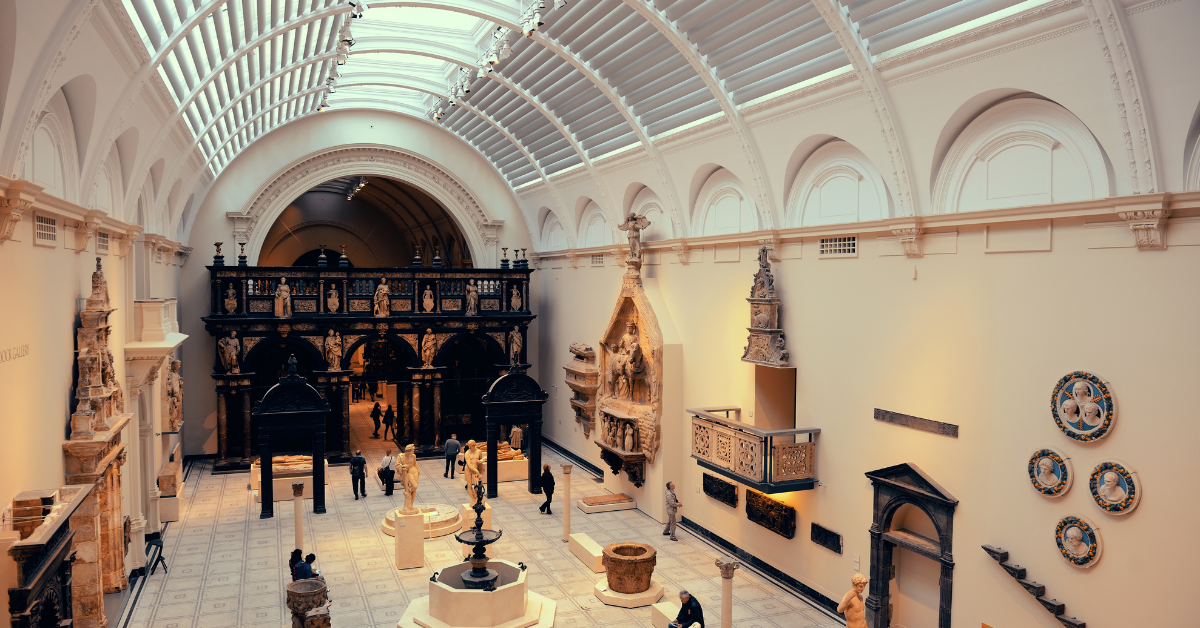Visiting the Metropolitan Museum of Art in New York offers not only a journey through global art history but also a chance to see how Japanese visitors uniquely perceive it. Their attention often goes to subtle details, silence, and the harmony between art and daily life, which may differ from Western impressions.
The Appeal of the Metropolitan Museum of Art for Japanese Visitors
The Metropolitan Museum of Art is a museum of overwhelming scale and diversity, and for Japanese people, it feels like a “microcosm of world culture.” From European masterpieces and sculptures to Egyptian relics and Asian art, its wide-ranging exhibits leave a strong impact. Japanese visitors, in particular, tend to focus on how their own culture is represented and appreciated abroad. Encountering ukiyo-e prints, samurai swords, or tea utensils often fills them with pride, along with the realization that “our culture stands on the world stage.”
Japanese sensibilities are known for attention to detail. Instead of being overpowered by the overall grandeur of a painting, they are often drawn to the subtle brushstrokes and delicate shading. In ceramics or sculptures, they notice the surface patterns and fine craftsmanship, marveling at the artisanship.
| Elements Japanese Notice | Elements Westerners Notice |
|---|---|
| Delicate brushstrokes | Large-scale composition |
| Shading and nuance | Light effects |
| Patterns and textures | Overall impact |
| Beauty of empty space | Vivid colors |
Many Japanese visitors comment, “I want to spend time looking at each piece carefully.” It is common to see them pause in front of a single artwork for a long time, carefully observing every detail.
Differences Between Japanese and Western Sensibilities
The same work can evoke very different impressions in Japanese and Western viewers. Western visitors often value scale, dynamic composition, and historical context, while Japanese viewers are moved by craftsmanship and texture.
For example, when looking at Greek sculptures, Westerners admire the physical dynamism and overall impact, while Japanese tend to focus on the stone’s texture or the folds of carved garments. In Renaissance paintings, Westerners may be impressed by color and light, but Japanese are captivated by the subtle expressions of figures and the careful rendering of the background.
| Perspective | Japanese Visitors | Western Visitors |
|---|---|---|
| Sculpture | Attention to carvings and textures | Focus on poses and overall power |
| Painting | Subtle facial expressions and details | Use of light and color |
| Aesthetics | Value placed on silence and empty space | Emphasis on dynamism and strength |
Understanding these differences allows foreign visitors to appreciate why Japanese viewers are moved by certain details, creating opportunities for mutual learning of sensibilities.
Pride and Rediscovery in the Japanese Art Galleries
The Metropolitan Museum also features dedicated galleries for Japanese art, showcasing swords, ceramics, lacquerware, folding screens, and ukiyo-e prints. These exhibits often give Japanese visitors a renewed sense of the depth of their culture.
A Japanese sword, for example, is not seen only as a weapon but as an artwork. The shining blade and ornate sword guards embody uniquely Japanese aesthetics. Tea utensils or lacquerware reveal the fusion of art and daily life in Japanese culture, reminding visitors that beauty was meant to be part of ordinary existence.
| Japanese Art | What Japanese Feel | What Foreigners Feel |
|---|---|---|
| Samurai sword | Precision and spirituality | A mysterious, exotic weapon |
| Tea utensils | Rediscovery of beauty in daily life | Fresh experience of another culture |
| Lacquerware | Fusion of life and art | Decorative splendor |
Seeing their culture displayed on a global stage is both a source of pride and an opportunity for rediscovery for Japanese visitors.
Japanese Perspectives for Foreign Visitors
For foreigners visiting the Metropolitan Museum, knowing Japanese perspectives enriches the experience. Japanese visitors are moved by “the beauty of empty space,” “silence,” and “intricate detail.”
Take folding screens as an example. Foreigners may be impressed by the grand compositions or gold leaf, but Japanese often find beauty in a small branch or a leaf painted with great care. Understanding this helps reveal the philosophy of nature and spirituality behind Japanese art.
| Japanese Perspective | Western Perspective |
|---|---|
| Find value in silence and empty space | Focus on dramatic composition |
| Emphasis on subtle detail | Emphasis on overall impact |
| Link between art and daily life | Enjoyment of decorative exoticism |
By trying this approach, foreign visitors can discover the hidden depth within artworks that they might otherwise overlook.
Lessons for Japanese and Foreign Visitors
The Metropolitan Museum provides learning opportunities for both Japanese and foreign visitors. Japanese visitors feel pride in seeing their culture celebrated worldwide, while also broadening their horizons through exposure to Western art’s grandeur. Foreign visitors, on the other hand, gain a new perspective by understanding the Japanese sensitivity to detail and the integration of art into daily life.
| Perspective | Lessons for Japanese | Lessons for Foreigners |
|---|---|---|
| Own Culture | Pride in global recognition | Appreciation of Japan’s cultural depth |
| Western Art | Broaden horizons through dynamism | Awareness of cultural contrasts |
| Exchange | Understanding differences in sensibility | Learning from diverse values |
This kind of mutual understanding transforms the museum experience into more than tourism. It becomes a bridge for cultural exchange.
Conclusion
The Metropolitan Museum of Art is a place where the world’s artistic achievements can be enjoyed, and for Japanese visitors it is a special space for pride and rediscovery of their culture. For foreigners, adopting Japanese perspectives such as the appreciation of detail and the beauty found in silence can enrich the experience. The museum’s greatest attraction lies in transcending cultural differences to appreciate art together.






